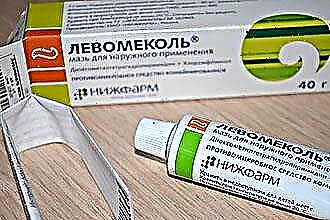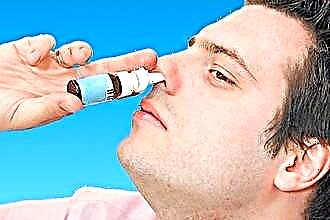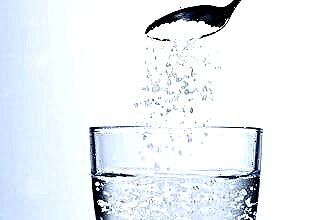Inflammatory processes in the nasal passages are treated quite easily, since there is always access directly to the affected area. But, if the disease spreads deeper, then the inflammation develops already in the paranasal sinuses. This manifests itself in a much more serious condition of the patient, and also significantly complicates the treatment. And the main task of any therapeutic manipulations in this case is to flush the sinuses, the most complete removal of mucus and purulent discharge from them.
What are sinuses?
 The paranasal sinuses, or sinuses, are cavities in the body of the bones in the front of the skull.
The paranasal sinuses, or sinuses, are cavities in the body of the bones in the front of the skull.
From the inside, they are lined with a mucous membrane, which normally produces mucus that slowly flows into the nasal cavities.
The sinuses are not airtight formations, but they communicate with the external environment through just a few small holes - the anastomosis.
The diameter of these holes does not exceed 1–2 mm, and they are located deep in the nasal cavities.
There are 4 groups of such sinuses:
- maxillary, or maxillary, located in the maxillary bone under each of the orbits;
- frontal, located above the eye sockets in the body of the frontal bone;
- latticed, located behind the bridge of the nose;
- sphenoid, located deep in the skull in the body of the sphenoid bone.
Due to such an anatomical location and the narrowness of the excretory canals, strictly speaking, there are no reliable ways to clear the sinuses at home. Directly inside the sinuses can only be penetrated with the help of medical manipulations. But it is quite possible to facilitate the removal of pus or mucus on your own.
Vasoconstrictor drugs
The first task that needs to be solved to ensure the flushing of the sinuses is the release of the excretory pathways. Swelling of the mucous membrane of both the paranasal sinuses and the nasopharynx leads to the fact that these already small openings are completely blocked. Therefore, any other cleaning methods will not be effective if the purulent and mucous contents have nowhere to be excreted, and the medicinal substances are not able to penetrate into the sinus.
The easiest way to remove edema is to use conventional pharmaceutical agents with a vasoconstrictor effect. These can be drugs such as naphthyzine, galazolin, etc. By narrowing the diameter of the vessels, they reduce their permeability to fluid, which leads to a rapid decrease in the swelling of the surrounding tissues.
Herbal inhalation
 This is one of the indirect ways to clear your sinuses. But it will be effective only if all mucus has been previously removed from the nasal passages, and the sinuses are open.
This is one of the indirect ways to clear your sinuses. But it will be effective only if all mucus has been previously removed from the nasal passages, and the sinuses are open.
Important! These herbs can only be used if there is no allergic reaction to them.
To prepare the infusion, mix 2 tablespoons of dry pharmacy chamomile, sage, eucalyptus, St. John's wort and lavender, as well as 1 tablespoon of yarrow and succession.
Take 3 tablespoons of the resulting mixture, place in an enamel or glass dish and pour in 2 liters of boiling water. Cover the dish with a lid, wrap it in a large towel and let it brew for 15 minutes. Then cover your head with a towel, bend over the container and inhale the vapors of the herbal infusion through your nose.
In addition, you can also inhale calendula tincture vapors, a few drops of which should be dissolved in boiling water. When carrying out such procedures, a pair of medicinal herbs will penetrate into the nose and further into the paranasal sinuses. When cooled, the steam condenses on the inner surface of the sinuses and thins mucus and pus, making it easier and easier to remove through the fistula. And the pharmacological action of phytopreparations helps to relieve inflammation and destroy pathogens, which most often cause the appearance of pus.
Inhalation with propolis
The effect of this procedure when flushing the sinuses at home is based on the effect of the volatile components of propolis, which can penetrate the sinuses. You will need 2 teaspoons of propolis alcohol solution, which is sold in pharmacies. Pour them into 2 liters of boiling water, and then immediately cover your head with a towel, bend over the pan and inhale the fumes. Another way to carry out inhalations with propolis is to soak cotton swabs with ointment, which should then be inserted into both nostrils for 5 minutes.
Remember that it is better not to use this method in young children, since almost all beekeeping products have an increased allergenic effect and can provoke unwanted reactions from the physiologically immature immune system of a child.
Saline washings
Saline solutions are widely used to cleanse nasal cavities, but they can also be useful in removing contents from the paranasal sinuses.
 Their action in this case will be based on the hygroscopic properties of salt - its ability to absorb and "pull" any liquid fractions onto itself.
Their action in this case will be based on the hygroscopic properties of salt - its ability to absorb and "pull" any liquid fractions onto itself.
The liquid itself, of course, practically does not get into the sinus, but it will create specific chemical and physical conditions that enhance the excretion of mucus.
Any saline solution can be used:
- Isotonic sodium chloride solution, or saline (9 grams of edible salt per 1 liter of water)
- A solution of dry sea salt (1 tablespoon per 1 liter of water)
- Concentrated saline solution (2 tablespoons of edible salt in 0.5 liters of water)
- Ready-made salt mixtures purchased from pharmacies, etc.
Intensive rinsing
The essence of this technique is to deliver a large amount of medicinal substances into the nasal cavity and nasopharynx in the hope that at least some of their volume will penetrate into the sinuses.
Of course, before you rinse the sinuses at home in this way, you should make sure that their fistulas are free of mucus.
Take a rubber syringe bulb and fill it with an antiseptic liquid. It can be:
- extracts of chamomile, St. John's wort or calendula;
- saline solutions;
- furacilin;
- purchased medicines, such as chlorophyllipt, etc.
Then insert the tip of the syringe into your nostril and squeeze the bulb firmly. The jet of solution should penetrate deep into the nasal cavity.
This procedure is not recommended for children, as fluid under pressure can enter the inner ear and cause otitis media, and, in addition, can damage the nasal mucosa by itself.
Method "Cuckoo"
 This method is very effective, but it can only be carried out in a hospital. Catheters are inserted into the patient's nostrils, through one of which furacilin is supplied under pressure, and through the other, the fluid that has passed through the nasal passages is intensively aspirated with a vacuum suction. Strengthening the removal of pus and mucus from the sinuses is achieved here by creating a pressure difference in the sinus and nasal passages. Final cleaning requires 5-7 procedures.
This method is very effective, but it can only be carried out in a hospital. Catheters are inserted into the patient's nostrils, through one of which furacilin is supplied under pressure, and through the other, the fluid that has passed through the nasal passages is intensively aspirated with a vacuum suction. Strengthening the removal of pus and mucus from the sinuses is achieved here by creating a pressure difference in the sinus and nasal passages. Final cleaning requires 5-7 procedures.
The technique received an unusual name due to the fact that during its implementation the patient should repeat the sound "cuckoo" all the time.
This prevents the flow of the pharmacological preparation supplied under pressure into the laryngeal cavity.
Sinus catheter "Yamik"
This device is also used in hospital and works by means of a pressure difference. One latex balloon, located on the back of the catheter, is inserted deep into the lower part of the nasal canal where it inflates to obstruct the nasopharynx. The second balloon seals the nostril hermetically and a syringe is inserted through it, pumping air out of the nasal cavity, creating a very low pressure in it.Normally, the pressure in the sinus "pushes" mucus and pus outward, where this discharge enters the syringe. This lavage of the sinuses is performed under local anesthesia.
Surgical methods
All of the following procedures are carried out only in a medical hospital.
Balloon sinusoplasty is a minimally invasive surgical procedure. In its course, the fistulas expand by introducing a balloon catheter into them, which expands for no more than 5 seconds, and then deflates and is removed from the nose, leaving the sinus passages open. Then, through them, the sinuses are washed with antiseptics and the introduction of pharmacological preparations into them. The procedure is performed under local anesthesia and endoscopic control.
Puncture of the paranasal sinus is a very reliable but traumatic way to clear the sinuses.
It is used mainly in emergency cases with extensive sinus inflammation with profuse discharge of pus.
 After puncturing the sinus wall with a needle under local anesthesia, all the contents are sucked out of it, and then drugs are injected. If the course of treatment requires several washes, then a catheter can be left in the hole for a while. Finally, if all of the above methods are ineffective, the most effective option for how to clear the sinuses from pus can be used - direct surgical intervention with opening the paranasal sinuses. It involves removing a portion of the sinus wall, which provides direct access to it for instruments and drugs.
After puncturing the sinus wall with a needle under local anesthesia, all the contents are sucked out of it, and then drugs are injected. If the course of treatment requires several washes, then a catheter can be left in the hole for a while. Finally, if all of the above methods are ineffective, the most effective option for how to clear the sinuses from pus can be used - direct surgical intervention with opening the paranasal sinuses. It involves removing a portion of the sinus wall, which provides direct access to it for instruments and drugs.



